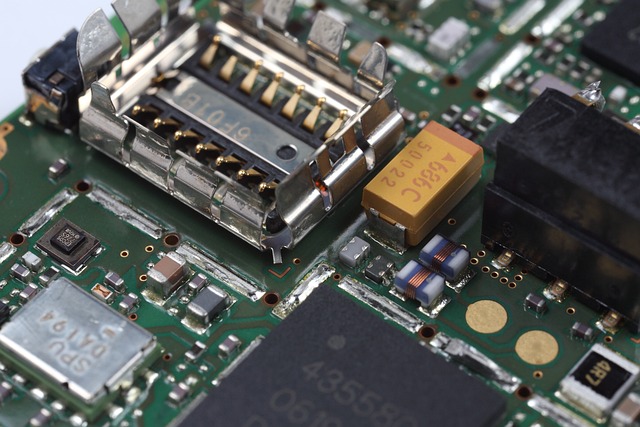How Is Predictive Analytics Transforming Business?
Predictive analytics uses data, statistical algorithms, and machine learning techniques to identify the likelihood of future outcomes based on historical data. Think of it as a savvy business partner who can spot trends before they even become apparent. Instead of reacting to problems after they occur, companies can anticipate challenges and seize opportunities before their competitors even know they exist.
For example, retailers use predictive analytics to forecast what products will fly off the shelves. By analyzing purchase histories, seasonal trends, and even weather patterns, they can optimize inventory levels, personalize marketing strategies, and boost sales. It’s like having a cheat sheet for business decisions.
In the realm of customer service, predictive analytics can anticipate customer needs and preferences. It helps companies offer personalized recommendations or address potential issues before customers even reach out. Imagine having a service agent who knows what you need before you even say a word—that’s the power of predictive analytics.
But it’s not just about predicting problems; it’s also about creating new opportunities. For instance, financial institutions use predictive models to detect fraudulent activities before they happen. It’s like having a financial watchdog that spots red flags and keeps your money safe.
Overall, predictive analytics is like a superpower for businesses, turning data into actionable insights. It’s transforming the way companies operate, making them more proactive, efficient, and competitive. The result? A smarter, more responsive business landscape where decisions are made with confidence, and success isn’t left to chance.
Unlocking Tomorrow: How Predictive Analytics Is Revolutionizing Business Strategies
Think about it: businesses today generate mountains of data every second. From customer transactions to social media interactions, the data flood is relentless. But here’s where predictive analytics steps in as your guiding star. By using sophisticated algorithms and historical data, it can predict future trends and behaviors with impressive accuracy. It’s not just about looking at past sales to forecast future ones; it’s about understanding patterns and nuances that help shape strategies.
For instance, imagine you’re running a retail store and you want to optimize inventory. Instead of guessing which products might be popular next season, predictive analytics analyzes past sales data, weather patterns, and even social media trends to forecast what will sell. It’s like having a super-intelligent assistant who’s always one step ahead, making sure you’re stocked up on the right products at the right time.
Or consider a marketing campaign: using predictive analytics, you can identify which segments of your audience are most likely to engage with your content or make a purchase. This way, you’re not just casting a wide net hoping for the best; you’re targeting your efforts precisely where they’ll have the most impact.
Predictive analytics doesn’t just help in decision-making; it’s a game-changer in how businesses operate. It transforms gut feelings and educated guesses into data-driven strategies that lead to more effective and efficient outcomes. In essence, it’s like having a cheat sheet for the future, helping you navigate through the uncertainties of the business world with newfound clarity.
The Future Is Now: Transformative Power of Predictive Analytics in Modern Business
So, how does it work? At its core, predictive analytics uses historical data and advanced algorithms to forecast future outcomes. Think of it as a highly sophisticated GPS for business strategy. Just as a GPS uses past traffic patterns to predict the quickest route, predictive analytics examines past data to forecast future trends. This capability is revolutionizing industries across the board.

In finance, it’s like having a financial advisor who never sleeps. Predictive models can analyze market trends and investor behaviors to recommend the best investment strategies, reducing risk and maximizing returns. Similarly, in healthcare, it’s being used to predict patient outcomes and personalize treatments, essentially paving the way for proactive rather than reactive care.
What about customer service? Predictive analytics can forecast customer issues before they arise, allowing companies to address problems proactively. It’s akin to a customer service team that can anticipate your needs before you even voice them.
Predictive Analytics: The Secret Weapon Behind Today’s Most Agile Businesses
Think of it like a weather forecast. Just as meteorologists use data to predict rain or sunshine, businesses use predictive analytics to anticipate market shifts, customer behaviors, and potential risks. This means you’re not just reacting to what’s happening now but preparing for what’s around the corner. For instance, retail giants use these insights to stock up on products that customers are likely to buy, ensuring they’re always ahead of demand.
Predictive analytics is more than just number-crunching; it’s about making smarter decisions. It helps companies identify opportunities for growth before their competitors do. It’s like having a map of hidden treasure when others are still guessing the route. By understanding patterns and trends, businesses can tailor their strategies to match what’s coming next, whether it’s launching a new product or optimizing their supply chain.
Moreover, predictive analytics isn’t just for big corporations. Small businesses can leverage this tool to compete on a level playing field. By analyzing customer data and market trends, even a small startup can make data-driven decisions that boost efficiency and drive success.
In a nutshell, predictive analytics empowers businesses to be proactive rather than reactive. It turns data into foresight, enabling companies to stay agile, make informed choices, and ultimately, stay ahead in a competitive landscape.
How Predictive Analytics Is Shaping the Next Generation of Business Success
Predictive analytics harnesses the power of historical data and sophisticated algorithms to forecast future outcomes. Think of it as a weather forecast for your business—only instead of predicting rain or sunshine, it predicts market trends, customer behavior, and potential risks. By analyzing patterns from past data, businesses can anticipate customer needs, optimize inventory, and fine-tune marketing strategies.
For instance, imagine a retailer who knows exactly when their customers are likely to shop and what products they are likely to buy. With this insight, the retailer can stock up on the right items at the right time, reducing waste and boosting sales. It’s like having a personal shopper who knows your preferences better than you do!
Moreover, predictive analytics isn’t just for big corporations. Small businesses can also harness this technology to compete with industry giants. By leveraging data, even a small local shop can understand its customer base, personalize marketing efforts, and improve operational efficiency. It’s as if they have a secret weapon that gives them an edge in a crowded market.
In short, predictive analytics is reshaping the business landscape, turning data into a powerful tool for success. It transforms uncertainty into actionable insights, helping businesses navigate the future with confidence and precision.
From Data to Decisions: The Impact of Predictive Analytics on Business Performance

Consider a retail business looking to optimize inventory. Instead of just restocking based on last year’s sales, predictive analytics analyzes purchasing trends, seasonal demand, and even social media sentiment to forecast what products will be hot in the coming months. This means you can avoid overstocking on items that won’t sell and ensure you have enough of the products customers actually want.
In another scenario, imagine a financial institution using predictive analytics to assess loan risks. By examining historical data on borrowers’ repayment behaviors, the institution can predict the likelihood of future defaults and adjust their lending strategies accordingly. This not only minimizes risks but also enhances profitability by making smarter, data-driven decisions.
So, whether you’re trying to fine-tune your marketing strategies, optimize operations, or improve customer satisfaction, predictive analytics acts like a super-powered decision-making tool. It transforms raw data into a strategic advantage, guiding businesses through the fog and into clearer, more profitable waters.
